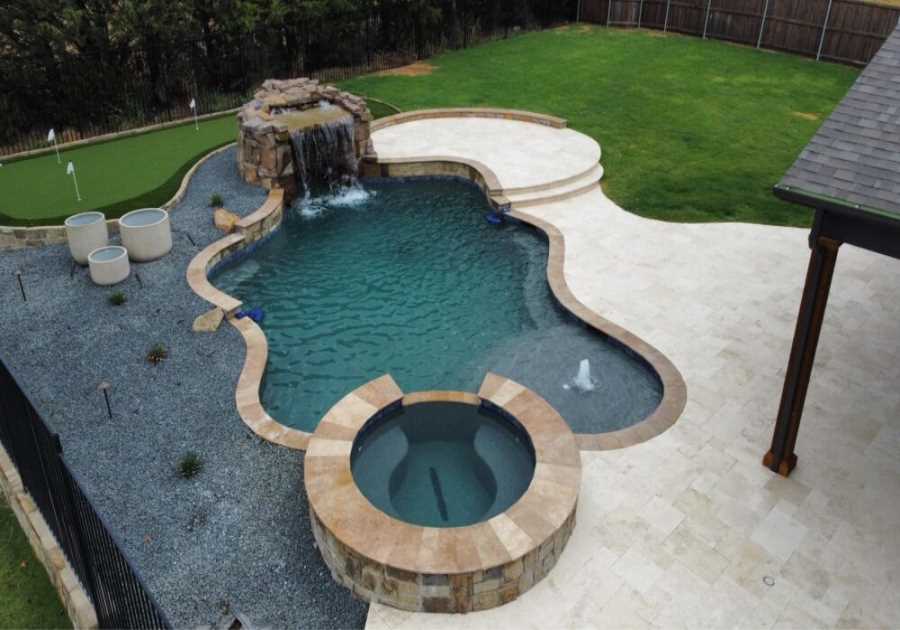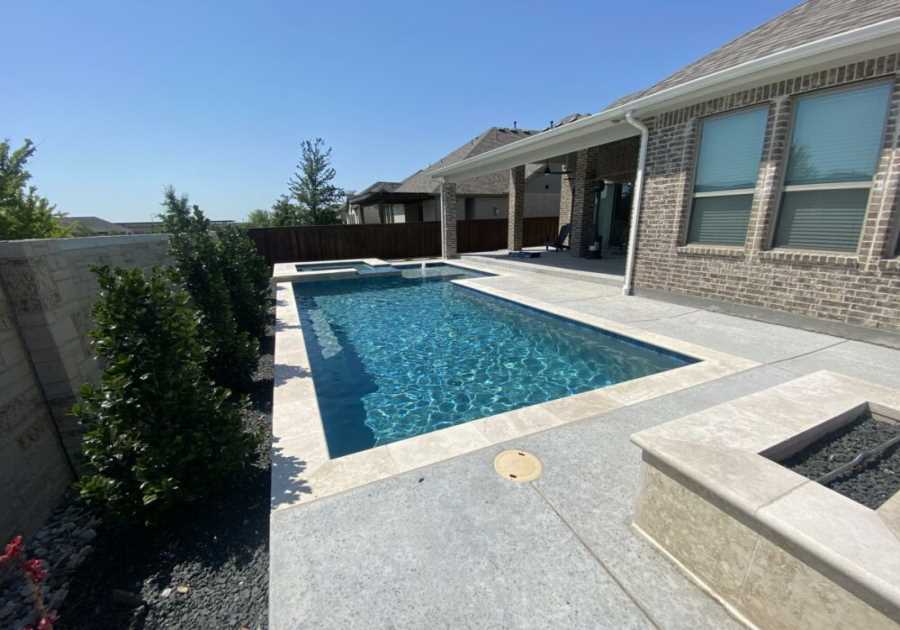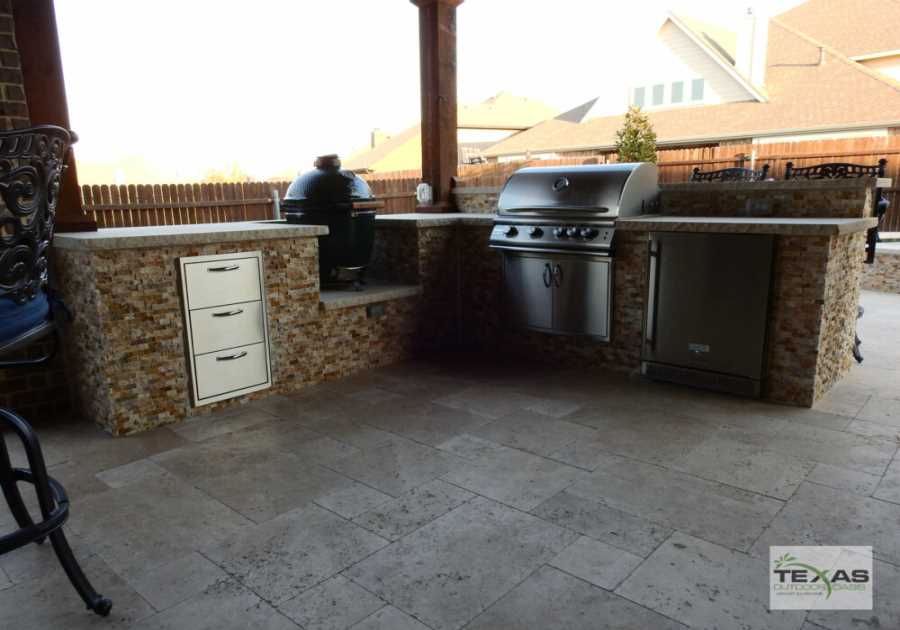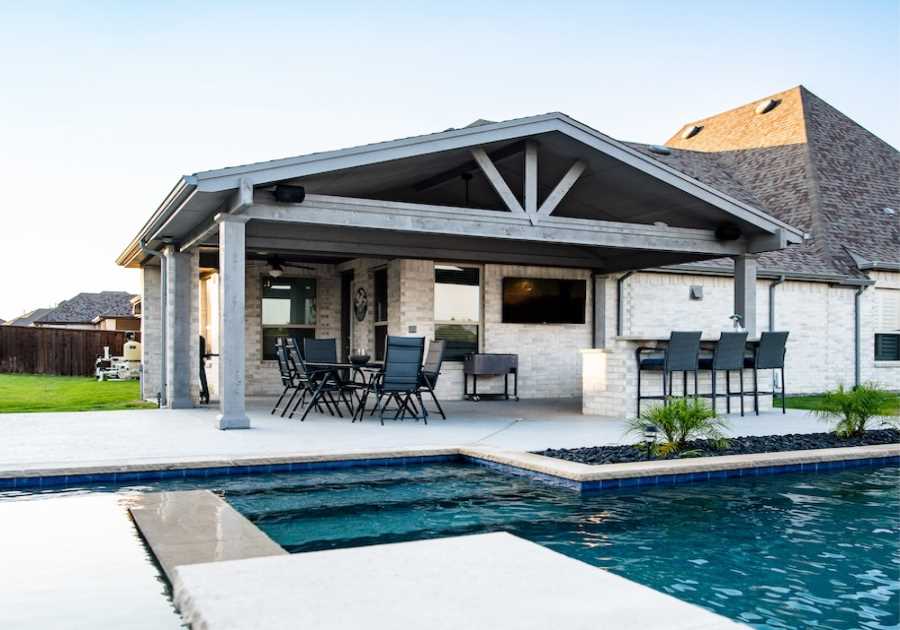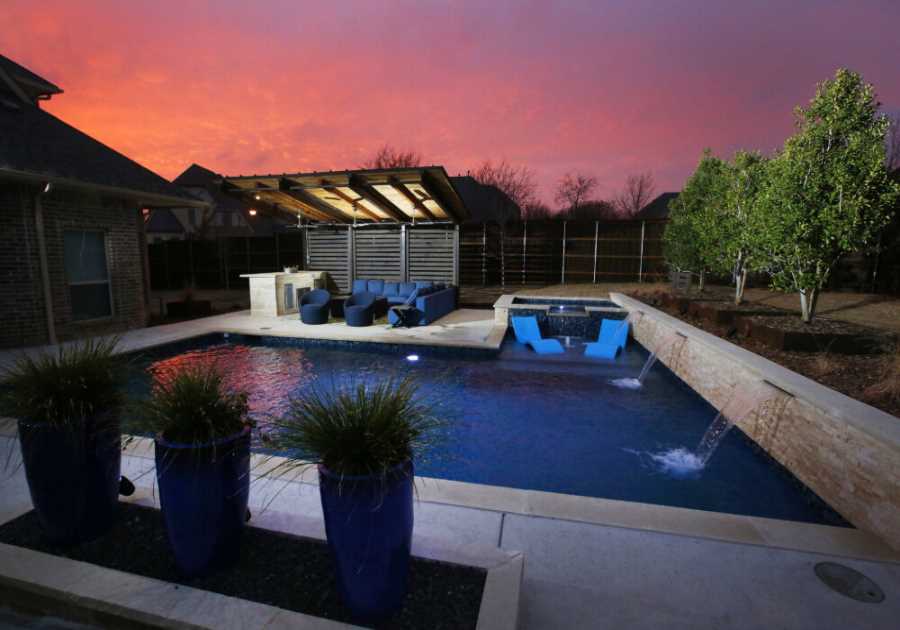“To poke a wood fire is more solid enjoyment than almost anything else in the world.”
19th Century American Writer
Feeding yourself and other people during an outdoor adventure can be one of the most gratifying experiences of your culinary life. Whether you’re a car or RV camper, backpacker, biker, boater, or weekend hiker, you can eat exceedingly well. Food always tastes better when cooked over a campfire and seasoned with the Great Outdoors!
However, cooking and/or grilling under primitive conditions can be stressful if you don’t have a plan.
For starters, learn how to light a fire with a minimum of tools. If you own a charcoal- or wood-burning grill, you can practice at home, igniting tinder and adding subsequently larger pieces of fuel. (Click here for more specific directions.) If you are one of those gifted people who can make fire using flint or a bow drill, I salute you. The rest of us must rely on less romantic methods, i.e., matches. (I prefer the long-handled wooden kind.)
An ideal cooking fire has burned down to glowing, white hot embers. Allow plenty of time for this to happen—at least an hour, or maybe two. Burn additional wood on one side of your fire so you can harvest fresh coals for cooking. Neutralize potentially “hangry” appetites by offering no-cook appetizers like an easy charcuterie platter or pre-packaged snacks in advance of the meal.
Equipment: What You’ll Need
Space, weight, and your method of transportation into the backwoods will determine what your batterie de cuisine will look like. At a minimum, you’ll need:
- A source of flame, whether it be matches or a butane lighter (bring more than one, and make sure they have a full load of butane)
- Grill gloves
- At least one skillet or saucepan large enough to cook for your group. If weight isn’t a concern, a lidded Dutch oven can be an asset, especially if it’s accompanied by a tri-pod.
- A grill grate, preferably one that is supported by legs, or one that can rest on top of stones or green logs. Alternatively, angle similarly-sized green logs around the coals; they act as an impromptu grate.
- Long-handled tongs
- A long-handled spoon or spatula
- Heavy-duty foil
- Skewers or green sticks carved to a point for grilling meat or kebabs
- Headlamp for late evening/early morning cooking
- Flexible plastic cutting boards to use as clean work surfaces or for slicing
- Sharp knife, preferably one reserved for food preparation
How to Manage Your Fire
Most campfire cooking utilizes direct grilling, i.e., food is exposed directly to the heat. Think burgers, hot dogs, whole fish, or kebabs. You can, however, approximate indirect grilling by angling food toward the fire on sticks or stakes, a method long used by the indigenous people of the American Northwest to cook salmon or other fish, or by moving your food to a cooler part of the fire and covering it with foil or a deep pot lid. You can create a multi-tier fire in the wild just as you can at home by raking the coals to different depths. (Always cook over mature embers and avoid active flames.)
If using a grill grate, allow it to heat up before adding food, especially stick-prone food like fish. (We like to pack a leak-proof bottle of olive oil or other cooking oil.) Flames can be tamed by raking out the coals or topping them with a layer of ash or dirt. Conversely, fanning the coals will increase their heat.
What to Cook
For me, the penultimate backwoods meal is fresh line-caught trout dredged in cornmeal and cooked in a cast-iron skillet by the Gallatin River. But the trout don’t always cooperate. So it’s a good idea to have ingredients on hand for “Plan B.”
Here are several options, from appetizers to dessert. (Note: Do as much prep work as you can at home before heading into the wilderness.)
- Toast slices of country-style bread, rub each with a raw clove of garlic, and drizzle with extra virgin olive oil. Sprinkle with dried Italian seasoning or grated aged cheese, such as Manchego or Parmigiano-Reggiano.
- Plank-Smoked Camembert: This recipe, always a favorite, is easily adapted to a campfire. You could even cook it on a hot stone near the fire.
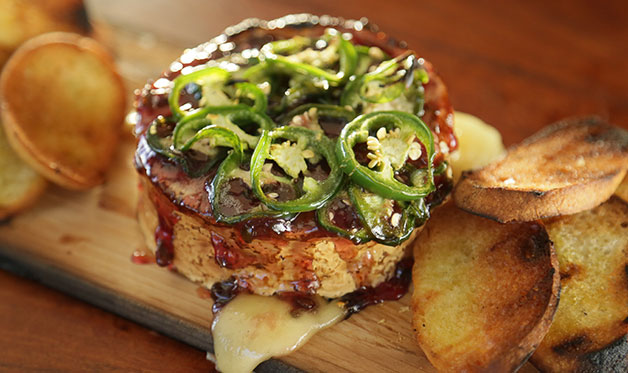
- Grilled Sangria: You’ve heard of “glamping,” privileged camping? This libation will set the stage.
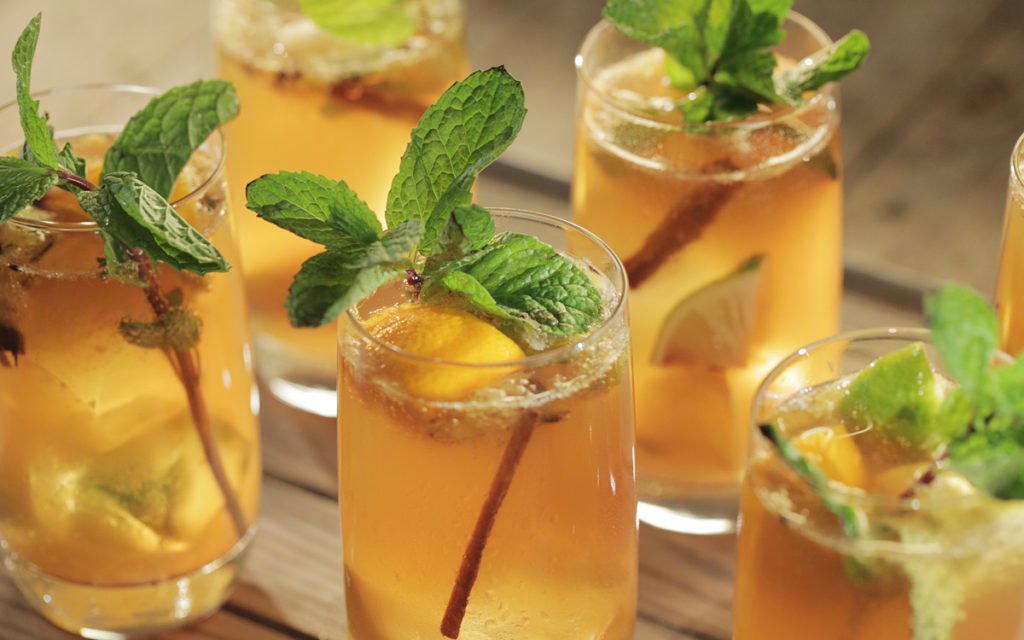
- Grilled Eggs with Prosciutto and Parmesan: So satisfying, you’ll want to repair to your tent or RV for a snooze before pursuing the day’s adventures.
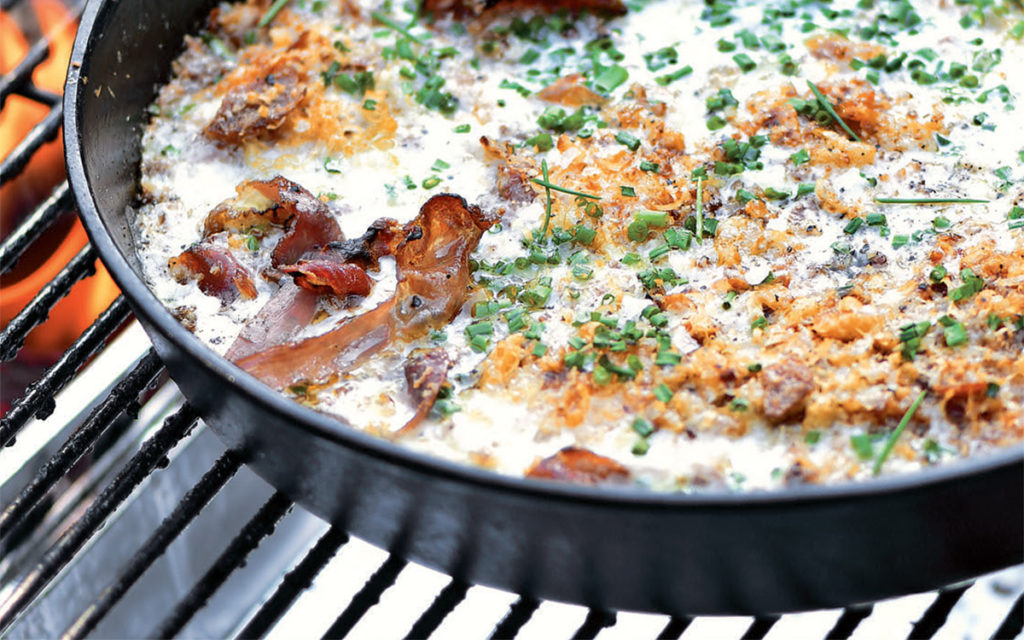
- Top prepared pizza crusts or Boboli breads with your favorite toppings and warm over a campfire until the cheese melts.
- Grilled Prosciutto-Wrapped Trout: Remember Steven’s first show, BBQ University? It was shot on the banks of a stream, where our cameramen fished for golden trout when they weren’t working. Steven spontaneously added trout wrapped with prosciutto to the day’s menu. Genius!
- Spruce-Grilled Steaks: An unexpected seasoning flavors these wood-grilled steaks.

- Dessert Quesadillas: We love s’mores, of course, but like to mix it up sometimes. Prepare these delectable quesadillas directly on the grill grate or in a cast iron skillet.
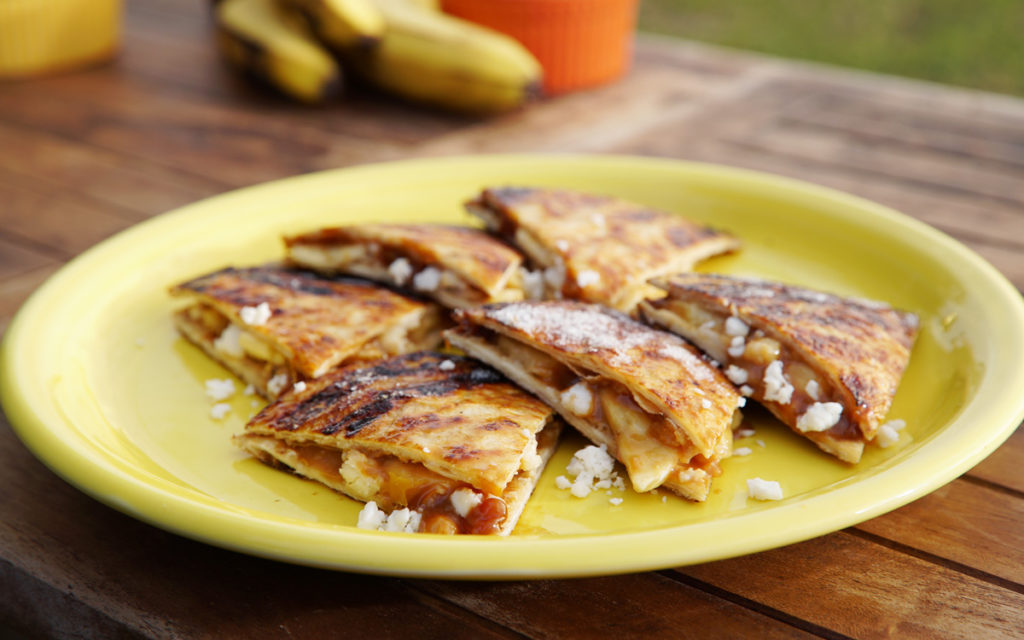
The post How to Cook Over a Campfire appeared first on Barbecuebible.com.
------------------------------------------------
By: Daniel
Title: How to Cook Over a Campfire
Sourced From: barbecuebible.com/2021/07/13/how-to-cook-over-a-campfire/
Published Date: Tue, 13 Jul 2021 10:00:50 +0000
Did you miss our previous article...
https://smokergrillreviews.com/grilling-favorites/cajun-ribeye-steak

